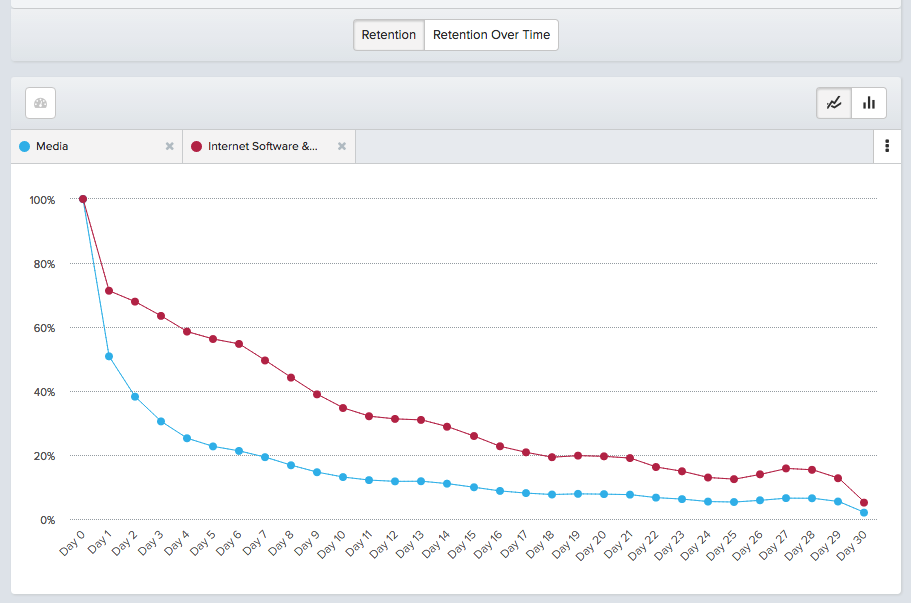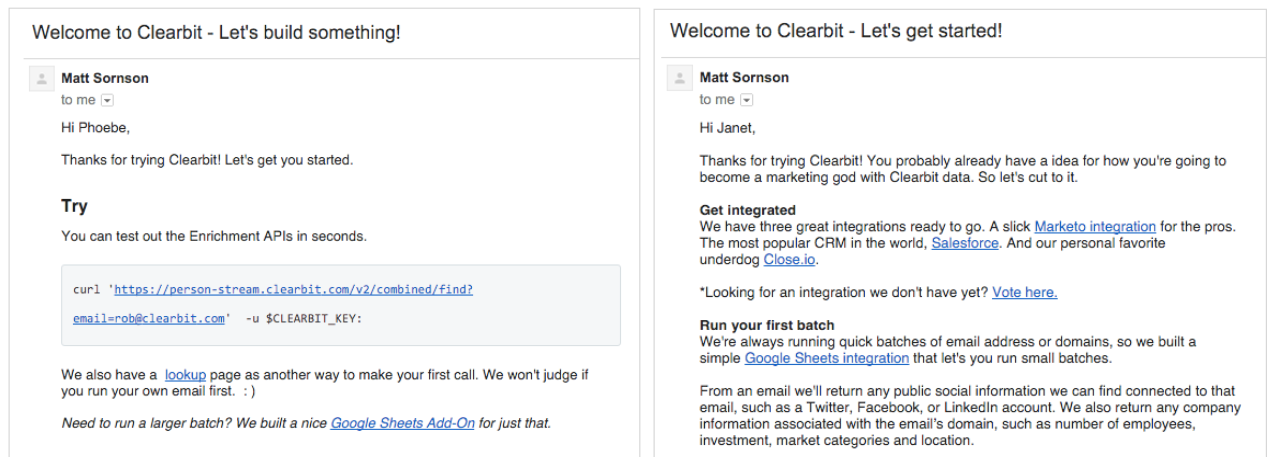Better product engagement begins with better lead quality

.png)

.png)
Lead qualification is the best tool in your arsenal for improving product engagement.
The insights it generates go beyond helping your sales and marketing teams. Ultimately, it's a measure of someone's potential to become an active, long-term customer.
The deeper your lead qualification process, the easier it becomes to find—and keep—those customers.
So if you're struggling with poor product engagement and lousy retention, it's time to turn your attention to the top of the funnel. Build out a lead qualification strategy, and quality product engagement follows.
There's more to lead qualification than maximizing sign-ups and short-term revenue: it's about finding customers that will be great for your business in the long-run.
After all, many companies create hundreds, even thousands of leads, each and every day. While some contain the seeds of fruitful, long-term relationships, others won't properly engage with your product. Without a way to prioritize great customers and flag bad-fit sign-ups, you're putting product engagement on the line.
Thankfully, it's possible to build a system to screen your leads, identify your best-fit customers, and create a powerful, low-churn growth machine.
Those great customers usually share a handful of key qualities that help them get real, meaningful benefit from your product:
Together, these qualities—which we'll call PETBA—combine to drive meaningful product engagement: they have everything they need to start using your product, quickly gain value from it, and continue using it, months and years into the future. To improve product engagement, we need to screen for these qualities.
One solution to this problem is to get hands-on with each and every lead. To do this, most companies use a series of pre-determined questions designed to vet each potential customer. These questions typically come from one of three frameworks: BANT (developed by IBM), GPCTBA/C&I (developed by HubSpot), and CHAMP (developed by InsightSquared)
To see this process in action, let's imagine we offer a powerful CRM tool. After filling out a contact form, our sales rep arranges a qualification call with a lead called Alex.
Qualification calls are typically brief, high-level discussions between a sales rep and a lead, designed to help sales teams identify good quality leads.In BANT's case, the qualification call is geared towards:
In practice, a sales rep using the BANT framework might ask the following questions:
Through the course of the conversation with Alex, the sales rep learns as much as he can about his motivations. He discovers:
This has big implications for Alex's future levels of product engagement. If we plug this information into our PETBA framework from earlier, it becomes clear that Alex has all the hallmarks of a great customer:
Based on a single call, our near-anonymous visitor has become a prime candidate for a productive, long-term relationship. If we could sign a few more customers like Alex, product engagement wouldn't be a problem.
Lead qualification is great for deep insight into a single lead, but with a pipeline of hundreds, even thousands of potential prospects, we can't spare this level of effort for everyone. To improve product engagement in a meaningful way, we need to automate this process for every potential customer.
That's where data enrichment comes in. Using tools like Clearbit's Segment integration, Reveal, you can build-out detailed lead insights from as little as a visitor's IP address; allowing you to flesh out lead profiles with dozens of demographic insights, like job title, industry or location.

The data generated is less open-ended than traditional lead qualification, but offer many of the same insights into future product engagement. As a result, it becomes possible to build a quantitative lead scoring model, a way to automate and simplify the process of sifting through leads to find our best-fit future customers. The easier it is to find those leads, the better our long-term product engagement.
For example, it might be that our best customers—those that have the strongest problem/solution fit, the right level of education, and so on—typically come from B2B companies in the SaaS industry.
Co-founders are more likely to drive long-term product engagement than less senior employees, and companies with around a hundred employees are likely to have the right budget to benefit from our product.
Based on those insights, we can maximize product engagement by prioritizing leads that match our target demographic. To do that, we can score each lead based on how closely they resemble our ideal customer.
The higher their score, the greater their chances of becoming happy, retained customers - and the higher priority they become for sales follow-up.

In the example above, we've used data enrichment to score 4 leads - including Alex.
Of our 4 leads, Alex has the highest score: 28 points out a possible 30. Using an automated process, we've reached the same conclusion as we did during the manual lead qualification process: Alex is a great fit to become a long-term, successful customer.
Other hallmarks of great product engagement are almost impossible to measure with a traditional lead qualification framework. Education is particularly difficult to gauge: a single call can only reveal so much about a lead's depth of knowledge across your industry, your competitors and your features.
Thankfully, behavioral data, generated from interactions on your website, can serve as a useful heuristic. For example, it's likely that leads that read your blog content, or subscribe to your newsletter, will have a deep understanding of the problem your product solves. Similarly, visiting your pricing page might suggest they have the autonomy and need to make a quick decision.
By identifying common actions that your most engaged users take, prior to sign-up, we can add an extra layer of data to our lead scoring model.

In the example above, we've highlighted 5 desired actions that lead to happy, engaged customers. If we return to our example lead, Alex, we can see how these actions might translate into better product engagement:
Every time a prospect completes one of the actions, they're assigned 2 points, boosting their lead score, and raising their priority for sales follow-up.
Using simple site interaction data, we can see that Alex has completed all 5 desired actions, netting a full score of 10 points. He's the highest scoring lead, and as a result, our best bet for a long-term relationship.
The deeper your lead qualification, the easier it becomes to sign-up the types of customers that will lead long, happy lives with your product. But by getting to grips with the backgrounds and needs of your future customers, you're also opening other doors to improved product engagement.
By using lead insights—like industry and job title—to segment your customer data, you can quickly view the efficacy of onboarding sequences on a cohort-by-cohort basis.
In the example below, our onboarding process is working well for internet software companies, but it's failing media companies. We can use this information to tweak our current onboarding process, or even better, develop separate onboarding flows for each industry.

The better your understanding of each customer, the easier it is to personalize their onboarding experience. Insights into their background, experience, seniority and knowledge can all be used to build unique flows, designed to help them get value from your product within the first few minutes of using it.
This is a process we use at Clearbit. Developers and marketers are both common customers, but they use our tools in very different ways. Instead of sending a one-size email that doesn't help either lead, we use the role attribute from our enrichment API to send out drip emails tailored to their background.

On the left, we've helped Phoebe, a developer, get hands-on with our Enrichment API. On the right, we've tailored our intro email to Janet, a marketer, very differently; choosing to focus on our most popular integrations with common marketing automation tools.

This process can be applied to entire onboarding sequences, boosting product engagement by nudging leads towards the features they're most likely to enjoy. The quicker your leads hit activation, the better your chance at a long-term relationship.
A pipeline of great-fit leads isn't just a nice-to-have for your sales team: it's a prerequisite of great product engagement. The better your understanding of your leads—their motivations, demographic information and on-site behavior—the more likely they are to get real value from your product.
Getting on the phone used to be the only way to unlock that data, but increasingly, tools like Segment and Clearbit make it possible to automate your lead scoring—while tools like Appcues make it possible to rebuild your product in light of what you've learned. Armed with better insight into your customer's needs, all of the time and energy you poured into lead generation translates into more than just MQLs and SQLs: it creates life-long customers and unparalleled product engagement.